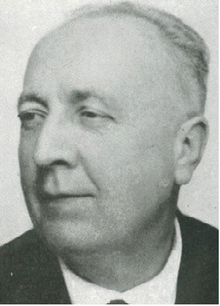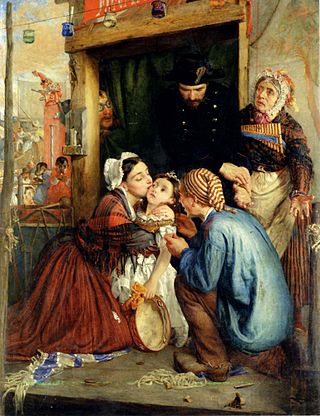Related Research Articles

The Annales school is a group of historians associated with a style of historiography developed by French historians in the 20th century to stress long-term social history. It is named after its scholarly journal Annales. Histoire, Sciences Sociales, which remains the main source of scholarship, along with many books and monographs. The school has been influential in setting the agenda for historiography in France and numerous other countries, especially regarding the use of social scientific methods by historians, emphasizing social and economic rather than political or diplomatic themes.

The British Agricultural Revolution, or Second Agricultural Revolution, was an unprecedented increase in agricultural production in Britain arising from increases in labor and land productivity between the mid-17th and late 19th centuries. Agricultural output grew faster than the population over the hundred-year period ending in 1770, and thereafter productivity remained among the highest in the world. This increase in the food supply contributed to the rapid growth of population in England and Wales, from 5.5 million in 1700 to over 9 million by 1801, though domestic production gave way increasingly to food imports in the 19th century as the population more than tripled to over 35 million.

Fernand Paul Achille Braudel was a French historian. His scholarship focused on three main projects: The Mediterranean, Civilization and Capitalism (1955–79), and the unfinished Identity of France (1970–85). He was a member of the Annales School of French historiography and social history in the 1950s and 1960s.

Emmanuel Bernard Le Roy Ladurie was a French historian whose work was mainly focused upon Languedoc in the Ancien Régime, particularly the history of the peasantry. One of the leading historians of France, Le Roy Ladurie has been called the "standard-bearer" of the third generation of the Annales school and the "rock star of the medievalists", noted for his work in social history.

Medieval demography is the study of human demography in Europe and the Mediterranean during the Middle Ages. It estimates and seeks to explain the number of people who were alive during the Medieval period, population trends, life expectancy, family structure, and related issues. Demography is considered a crucial element of historical change throughout the Middle Ages.

The economic history of France involves major events and trends, including the elaboration and extension of the seigneurial economic system in the medieval Kingdom of France, the development of the French colonial empire in the early modern period, the wide-ranging reforms of the French Revolution and the Napoleonic Era, the competition with the United Kingdom and other neighboring states during industrialization and the extension of imperialism, the total wars of the late-19th and early 20th centuries, and the introduction of the welfare state and integration with the European Union since World War II.

The School for Advanced Studies in the Social Sciences is a graduate grande école and grand établissement in Paris focused on academic research in the social sciences. It is regarded as one of the most prestigious institutions of graduate education in France. The school awards Master and PhD degrees alone and conjointly with the grandes écoles École normale supérieure, École polytechnique, and École pratique des hautes études.
Capitalism is an economic system based on the private ownership of the means of production. This is generally taken to imply the moral permissibility of profit, free trade, capital accumulation, voluntary exchange, wage labor, etc. Its emergence, evolution, and spread are the subjects of extensive research and debate. Debates sometimes focus on how to bring substantive historical data to bear on key questions. Key parameters of debate include: the extent to which capitalism is natural, versus the extent to which it arises from specific historical circumstances; whether its origins lie in towns and trade or in rural property relations; the role of class conflict; the role of the state; the extent to which capitalism is a distinctively European innovation; its relationship with European imperialism; whether technological change is a driver or merely a secondary byproduct of capitalism; and whether or not it is the most beneficial way to organize human societies.

The economic history of the Ottoman Empire covers the period 1299–1923. Trade, agriculture, transportation, and religion make up the Ottoman Empire's economy.
The longue durée is the French Annales School approach to the study of history. It gives priority to long-term historical structures over what François Simiand called histoire événementielle. It concentrates instead on all-but-permanent or slowly evolving structures, and replaces elite biographies with the broader syntheses of prosopography. The crux of the idea is to examine extended periods of time and draw conclusions from historical trends and patterns.

The Great Divergence or European miracle is the socioeconomic shift in which the Western world overcame pre-modern growth constraints and emerged during the 19th century as the most powerful and wealthy world civilizations, eclipsing previously dominant or comparable civilizations from the Middle East and Asia such as Qing China, Mughal India, the Ottoman Empire, Safavid Iran, and Tokugawa Japan, among others.

A salt road refers to any of the prehistoric and historical trade routes by which essential salt was transported to regions that lacked it.

This article covers the Economic history of Europe from about 1000 AD to the present. For the context, see History of Europe.

The economy of England in the Middle Ages, from the Norman invasion in 1066, to the death of Henry VII in 1509, was fundamentally agricultural, though even before the invasion the local market economy was important to producers. Norman institutions, including serfdom, were superimposed on an existing system of open fields and mature, well-established towns involved in international trade. Over the five centuries of the Middle Ages, the English economy would at first grow and then suffer an acute crisis, resulting in significant political and economic change. Despite economic dislocation in urban and extraction economies, including shifts in the holders of wealth and the location of these economies, the economic output of towns and mines developed and intensified over the period. By the end of the period, England had a weak government, by later standards, overseeing an economy dominated by rented farms controlled by gentry, and a thriving community of indigenous English merchants and corporations.
Serfdom has a long history that dates to ancient times.

Jacques Jules Marie Joseph Le Roy Ladurie was a French agriculturalist and politician. He played a leading role in agricultural syndicates in the 1920s and 1930s. During World War II (1939–1945) he was Minister of Agriculture in Vichy France for several months in 1942. He later participated in the French Resistance. After the war he was a deputy for the Calvados from 1951 to 1955, and again from 1958 to 1962.

Montaillou is a book by the French historian Emmanuel Le Roy Ladurie first published in 1975. It was first translated into English in 1978 by Barbara Bray, and has been subtitled The Promised Land of Error and Cathars and Catholics in a French Village.

Agriculture in the Middle Ages describes the farming practices, crops, technology, and agricultural society and economy of Europe from the fall of the Western Roman Empire in 476 to approximately 1500. The Middle Ages are sometimes called the Medieval Age or Period. The Middle Ages are also divided into the Early, High, and Late Middle Ages. The early modern period followed the Middle Ages.
Landesausbau describes medieval settlement and cultivation processes in regions of Western Europe that were previously only sparsely populated or uninhabitable. By means of clearing of woods and drainage of wetlands, new agricultural areas and new settlement areas were created.

French peasants were the largest socio-economic group in France until the mid-20th century. The word peasant, while having no universally accepted meaning, is used here to describe subsistence farming throughout the Middle Ages, often smallholders or those paying rent to landlords, and rural workers in general. As industrialization developed, some peasants became wealthier than others and drove investment in agriculture. Rising inequality and financial management in France during the late 18th century eventually motivated peasants to revolt and destroy the feudal system. Today peasants could no longer be said to exist as an economic or social group in France, although many attempts have been made to honor and preserve this traditional way of life.
References
- 1 2 Le Roy Ladurie, Emmanuel. The Peasants of Languedoc. Translated by Day, John. University of Illinois Press. p. 1. ISBN 0-252-00635-6.
- 1 2 3 4 5 6 7 8 9 10 11 12 13 14 15 16 17 18 Huges-Warrington, Marnie, Fifty Key Thinkers on History, London: Routledge, 2000 page 195.
- 1 2 3 4 Huges-Warrington, Marnie, Fifty Key Thinkers on History, London: Routledge, 2000 page 194.
- 1 2 3 4 Carroll, Stuart "Le Roy Ladurie, Emmanuel" pages 711-712 from The Encyclopedia of Historians and Historical Writing, Volume 1, edited by Kelly Boyd, London: Fitzroy Dearborn, 1999 page 712.
- 1 2 3 4 5 6 7 8 9 10 11 12 13 14 15 16 Huges-Warrington, Marnie, Fifty Key Thinkers on History, London: Routledge, 2000 page 196.
- ↑ Huges-Warrington, Marnie, Fifty Key Thinkers on History, London: Routledge, 2000 pages 195-196.